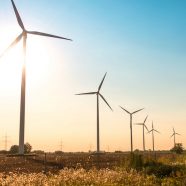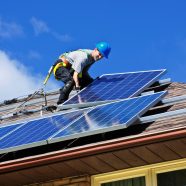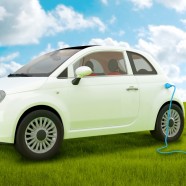Alternative Energy Trends in South Florida
About 90 percent of the power used in south Florida homes is electric, with the majority of that being created by burning coal or natural gas. The call for renewable energy sources is growing, for energy conservation as well as economic reasons. Alternative energy sources aren’t as common in south Florida as they are in other parts of the country, but installations are on the rise, revealing a brighter future for renewable energy in this part of the state.
Alternative energy isn’t just the province of new construction. Home remodels and business renovations in south Florida can be the perfect time to add an alternative, cleaner source of power to your building. Depending on your environment, you have multiple options to consider:
- Solar power can provide up to 100 percent of your daily power needs
- Wind energy is completely clean, but not as effective in this area
- Kinetic energy is a new technology with an exciting future
Solar Power
You would think that solar power in Florida would be a natural part of green building. After all, we’re known as the sunshine state. In past years, though, homeowners and business owners have been forced to pay fees to power companies even if their solar panel array produces all the power they use. In essence, everyone in the state was forced to pay for being hooked up to a power company, even if they never used it.
Today, a combination of energy conservation lobbying and financial incentives in the form of substantial tax breaks are making solar energy a better bargain for south Florida residents. While it can take years for a full panel array to pay for itself in saved energy costs, the fact that solar energy doesn’t add to greenhouse gases can tip the scales when deciding to install panels.
Wind Energy
Compared to the great plains of Kansas and Wyoming, south Florida doesn’t have a steady supply of strong winds to count on. Many wind generators are needed in a given area to produce useful amounts of electricity because of the relatively ineffective technology available. The numbers for this get more attractive for wind turbines placed over the water and on extra-high poles that catch stronger air currents, but in south Florida this is only possible for residents with large plots of land or long water frontage.
Kinetic Energy
One of the most exciting new concepts in green building for the south Florida area is using kinetic energy to produce electrical power. For residents who have property on the water, this can be a solid source to rely on in years to come. Kinetic energy power plants are small, floating machines that are anchored to the sea bed. Attached to the ground with a cable, these machines, housed in pods, bob up and down with the waves. Every time the pod goes up or down, it creates a small amount of energy that can be stored to be used later. Some brands include small water wheels that increase the electrical output, while others are simple passive systems with levers that move with the waves.
A kinetic energy production field requires multiple pods installed in the water, so it’s obviously only useful for residents with water frontage, but it’s growing in popularity in some communities for the production of municipal power as well as for individual owners.
Read MoreGoing Green: How Solar Panels Work
It has become a common sight in the Sunshine State, to see solar panels on the roofs of homes and businesses. After all, with all that sunshine, it makes sense to take advantage of the energy savings and energy efficiency benefits that going fully or partly off grid offers, and what better way than to harvest sunshine!
Whether you’re interested in green building in general, or just considering retrofitting your home with solar panels to take advantage of energy savings and lower utility bills, you might have wondered how it all works. So we decided to give you the short and simple version of how solar panels work, and here it is.
Solar Panel Basics
The solar panels that power homes and businesses are known as photovoltaic or PV panels. There are other types of solar panels, such as thin film, and other methods of collecting solar energy like parabolic troughs, but if you’re going off grid, it’s PV panels that will do the work for you.
Solar panels work by creating an electrical field, by sandwiching two layers of silicon together, and by treating each of those layers to manipulate them into having a particular charge. The top layer will be treated with phosphorous, to add electrons, and create a negative charge, while the bottom gets added boron, which removes electrons, and creates a positive charge.
With the electrical field established, photons from sunlight can “knock electrons loose” and those electrons are then collected, and become electricity.
The Complicated Stuff
When you look at PV solar panels in such a basic, fundamental way, it can be difficult to understand why it costs so much to convert your home, get energy savings and conserve energy. However, there is a lot more to a solar power system for a building than just the panels (and even those are complex to design and manufacture.)
First, there’s the issue of the type of power that has been generated. Our homes run on what is known as AC, or Alternating Current, but the power that comes from a PV panel is DC, or Direct Current. Since the two don’t mix, the first thing that needs to happen is to use a piece of equipment called an inverter to convert the DC current into usable AC power.
There’s usually also a piece of equipment called a regulator installed early on in the solar power system. This piece of equipment helps to ensure that the power from your solar panels isn’t too much for your batteries or panel to handle.
Next, there are usually batteries, which are typically deep cycle batteries, which store the electrical power collected by the solar panels, since there is no power generated at night, and your home will still need to have power when it’s dark!
Finally, there’s the connection to your electrical panel, utility meter, and in some cases, the main grid.
Solar panels also need to be carefully oriented to collect sunlight efficiently, and there are many other considerations that need to be made. In short, while the principles of solar power are not too complicated, the systems can be, and if you’re thinking about going off grid, it’s always a good idea to talk to an electrical contractor who has some experience!
Read MoreHow Electrical Vehicles are Improving Green Efficiency
In 2011, Barack Obama set the goal of having 1 million electric vehicles on the road by the end of this year. It is now clear that while we won’t reach that goal, there have been significant strides in the electrical vehicles market. Although the industry hasn’t achieved its target of a million units, it has made great strides and we are improving not only the state of EV’s on the road, but also the ideals of electrical efficiency and green building in general.
The Silent Electrical Revolution
In spite of falling short of those goals, there are some good signs that there is a silent revolution going on in the automotive world:
- Of the 300,000 battery powered vehicles on the road today, nearly 120,000 were sold in 2014 alone. That means that the demand for plug-in powered cars is increasing, and that is a good sign. It means that people are realizing the value of alternative energy, and that is something we all need to do.
- Far from being boring and slow like they used to be, manufacturers like Tesla have finally managed to make electric cars sexy, and that means that the demand is growing.
- The market for hybrids has never been bigger, either, and nearly 230,000 units were sold in the USA in 2015 alone!
- There is already a demand for certain electric vehicles that are due to be available in 2016, including Chevrolet’s Volt and several Tesla models.
- Volatility in the oil market is likely to continue, which will make the search for viable alternatives ever more important.
- Improvements in batteries and electric motor efficiency are making the payback period for electric cars, and the lifecycle costs, a more attractive proposition for buyers.
These factors make it clear that while the growth in demand for electric cars has been slow it is gaining momentum, and battery-powered and plug-in cars are not going to disappear anytime soon.
What Are Electric Cars Doing for Electrical Efficiency?
It is wonderful that electric cars are finally becoming a genuine mainstream vehicle option in America, but you may be wondering what impact they are having on electrical efficiency in general, and green building in particular.
There are several ways that electric vehicles are impacting how we build homes and other structures. On the one hand, consumers are becoming better educated about options and more environmentally conscious, which means they are more open to alternative power, energy savings and efficient home strategies.
On the other hand, the improvements being made to batteries and motors in the automotive industry is also driving innovation and change in other industries, including electrical, electronics and HVAC, all of which means it’s only a matter of time before we have more options for efficient home building.
Whatever your feeling about green power and electric cars, however, it’s worth finding an electrical contractor in south Florida who can advise you on how to make your home more efficient. Not only will you be helping to reduce the impact on the environment, but you can also save a bundle on utility bills.
Read More



Recent Comments